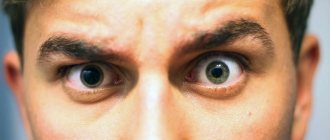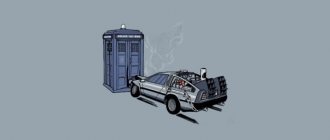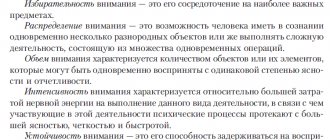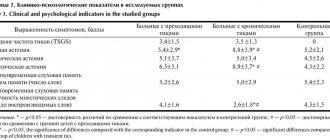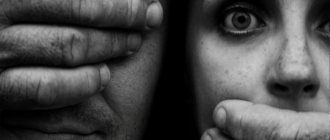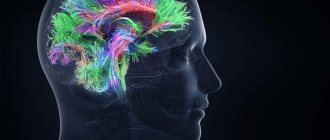A nervous tic is a sudden, repetitive movement that occurs as a result of involuntary contraction of a specific muscle group. For example, it is often said that “the eye twitches.” Twitching can affect different muscles, spread from one muscle group to another, and even cover almost the entire body.
Movements during tics are obsessive and a person cannot control them. When you try to suppress a tic, the tension increases and as a result the tic only gets worse.
The most common tic occurs in childhood, and it is detected somewhat more often in boys than in girls. It is believed that tics occur in 13% of boys and 11% of girls.
Causes of nervous tics
The causes of tics are usually grouped as follows:
- primary tics
caused by psychogenic factors. In this case, there are no organic pathologies. The occurrence of a tic can be caused by stress, fear, depression, and neurosis. It is this type of tics that most often occurs in children. The cause of a nervous tic in a child can be psycho-emotional trauma, increased anxiety, obsessive fear, attention deficit hyperactivity disorder (ADHD); - secondary tics
. In this case, the tic is a consequence of any diseases that cause disruption of brain activity. These may be infectious diseases (encephalitis), intoxication, brain injury, cerebrovascular accidents; - hereditary tics.
Treatment of tics, hyperkinesis of Tourette's syndrome. We will help you!
Before starting treatment for a nervous tic, your doctor will perform a full neurological examination, evaluate the results of your previous studies (if any), and if necessary, recommend one or more diagnostic procedures (tomography, encephalogram, etc.). We must clearly understand the source of the problem, then the treatment of nervous tics or hyperkinesis will hit the target.
Based on the examination data, we recommend that you treat a nervous tic, which may consist of:
- Taking medications. You may be offered medications that reduce nervous tension and improve brain function. If necessary, we will offer you symptomatic treatment that reduces the severity of tics and hyperkinesis.
- Work with a psychotherapist or clinical psychologist. A tic or other hyperkinesis can be a way of realizing accumulated nervous tension, trauma, or emotions that do not find a proper outlet. After a course of psychotherapy, many of our patients not only get rid of tics, but generally feel calmer and healthier. Even with Tourette's syndrome.
With some severe hyperkinesis , these measures are not always so effective. In these cases, we can turn off the muscle involved in hyperkinesis by injecting it with Botulinum toxin A (Botox, Dysport).
In cases where hyperkinesis or nervous tics are associated with a serious disorder in the extrapyramidal system, we recommend resorting to neurosurgical treatment.
Symptoms of a nervous tic
Involuntary movements can affect only one muscle group - such tics are called local
.
There are also simple and complex tics. A simple tic is a complex of the simplest movements of the same type. With a complex tic, involuntary movements affect several muscle groups. A severe type of the disease is a generalized tic
, affecting almost the entire body. With this type of tic, involuntary movements usually begin in the face, then involve the muscles of the neck, shoulders, arms, chest, abdomen and back, and even legs.
Most often, tics affect the facial muscles. In this case, such movements as blinking, moving the lips, opening the mouth, moving the eyebrows, and twitching the nose are characteristic. When a tic spreads to the neck and shoulders, nodding and shaking of the head are typical. Tic spreading to the limbs is expressed in the form of flapping of arms, clapping of palms, stamping and jumping.
A group of vocal manifestations is also distinguished. In this case, screams, coughing, howling, uttering curses, and incoherent speech may be observed.
Characteristic symptoms of the disease
The problem of the occurrence of nervous tics is a fairly pressing topic of our time. The physiological reason for the development of hyperkinesis: disruption of the functioning of certain parts of the brain, failure of neural connections or a reaction to an external stimulus.
A tic in an adult can manifest itself in the following ways:
- twitching of the eyebrow or eyelid;
- wink;
- forehead wrinkling;
- licking or pursing lips;
- swelling of the wings of the nose;
- tongue sticking out;
- shrugging shoulders;
- trembling of the whole body;
- raising hands;
- pronunciation of individual sounds, words and even phrases;
- characteristic grunting;
- whistling;
- coughing
Since nervous tick is a neurological disease, its course can be purely individual. Symptoms may vary depending on the general physical condition and the presence of external stimuli. Watching TV for a long time, as well as working or playing on a computer, negatively affects the course of the disease.
Depending on the severity of the clinical picture, hyperkinesis is considered as:
- single - appearing from two to nine times in 20 minutes or during remission;
- serial - occur in paroxysms, in 20 minutes from 10, but not more than 30 ticks:
- status - the most severe condition, in which from 30 to 600 or more manifestations occur in the same 20 minutes. They are characterized by the acute stage of the disease.
Excitement, overwork, and depression provoke an increase in the frequency of tics, while switching attention and focusing on an exciting activity, on the contrary, reduces this tendency.
When should you see a doctor if you have a tic?
Every person can experience involuntary muscle contractions under great emotional stress (for example, eyelid twitching). If such manifestations are observed within 2 weeks (including repeated single tics), then this is already a disease. Tics that last less than a year are called transient (temporary). If a tic persists for more than a year, it is called chronic. Simple transient tics usually go away on their own. However, it is still necessary to see a doctor to reduce the risk of the tic becoming stronger and stronger.
Consequences of tic hyperkinesis
If the disease cannot be cured completely, you need to learn to live with it. Nervous tics, with the exception of generalized forms or Tourette's syndrome, do not in any way affect a person's consciousness, level of thinking or intellectual abilities. The patient is, as they say, of sound mind, and hyperkinesis can be attributed to behavioral characteristics.
Attention deficit hyperactivity disorder (ADHD) can develop due to progressive nervous tics. It is characterized by impaired memory, attention, and perception of information. Speech becomes either too fast and unclear, or slow. The level of social adaptation decreases.
Treatment of nervous tics
Nervous tics are treated by a neurologist. In case of primary tic, a psychotherapist can help. Primary tics in children usually go away with age. To relieve symptoms and speed up recovery, it is recommended:
- normalization and adherence to the daily routine. It is necessary to get up, eat and go to bed at approximately the same time;
- proper and balanced nutrition;
- active lifestyle, sports, walks in the fresh air;
- eliminating excessive mental stress;
- reduction of psycho-emotional stress. Normalization of relationships in the family, and for the child also at school, is of great importance.
If tic manifestations are severe, the doctor may prescribe medication. For secondary tics, treatment is primarily aimed at combating the underlying disease that caused the tic. In most cases, with successful treatment of the underlying disease, the tic disappears.
Massage and reflexology are also used to treat tics.
Treatment methods
Therapy of tic disorder, especially of psychogenic origin, requires a stable psycho-emotional background.
To do this, the patient is, first of all, advised to avoid strong stressful influences, since acute psychological trauma is one of the first causes of the disease.
Creating a favorable psychological background implies a rational distribution of physical, mental, emotional stress, and an adequate combination of work and rest. In other words, a patient with hyperkinesis should avoid overwork. Quarrels and conflict situations can aggravate the condition.
In a state of emotional stress in the brain, excitation processes prevail over inhibition, causing excessive activation of the conduction of electrical impulses. When intensified, they can cause a pathological focus of excitation, which, in turn, will cause hyperkinesis.
you get rid of increased arousal and, therefore, obsessive muscle contractions. Outdoor walks and active recreation are recommended: skiing, cycling, rollerblading. Aromatherapy is also indicated.
To distract attention from unpleasant sensations, from concentrating on the problem, you can switch to a pleasant, interesting activity. This is a way to fill your mind with inspiring, productive thoughts, which will definitely have a positive impact on the overall emotional background.
It is known that muscle hyperkinesis intensifies when the patient directs all his attention to them, and gradually subside when the person is distracted.
Since obsessive muscle twitching in some cases becomes a consequence of micronutrient deficiency, experts recommend
paying increased attention to the diet .
Preference is given to products rich in calcium, magnesium, and glycine. These components take an active part in stabilizing the functioning of the nervous system.
Calcium ensures the conduction of nerve impulses along muscle fibers, responsible for muscle contractility. The microelement is found in sufficient quantities in fermented milk products and fish, but this does not mean that it is necessary to uncontrollably absorb these products.
Excess calcium, as well as its deficiency, negatively affect the functioning of the body. Scientists from the UK have found that excess calcium levels lead to the synthesis of specific substances that destroy nerve cells. Subsequently, degeneration of the nervous tissue leads to parkinsonism, accompanied by uncontrollable twitching of the muscles of the limbs, neck, and head.
Magnesium in the body regulates the process of excitation in the central nervous system, eliminating its excessive activity. Thanks to this, a person can adequately cope with stressful effects, reducing sensitivity to environmental irritants. Normalizing the functioning of the central nervous system allows you to reduce emotional stress, preventing the development of neurogenic tics. Sufficient amounts of magnesium are found in seafood and buckwheat.
Glycine is an amino acid that can be synthesized in the human body. Additionally, it is obtained from foods of animal origin: meat, fish, dairy products, eggs, as well as legumes, nuts, cheeses, cabbage, and beets.
The amino acid acts as a neurotransmitter that stimulates inhibition processes. Glycine helps prevent impulsive, uncontrolled muscle work, including epileptoid seizures.
Thus, a varied, healthy diet plays an extremely important role in the treatment of tic disorder. Patients are recommended to eat meals in small portions, up to 6 times a day.
The deficiency of microelements in the body can be compensated with the help of food supplements and mineral complexes.
Of course, it is impossible to overestimate the beneficial effects of sound, adequate sleep for emotional calm.
Separately, it should be said about the nervous tic of the eye, which occurs due to overstrain of the visual analyzer. It is associated with overuse of time spent in front of a monitor or phone screen, and prolonged reading. In this case, in addition to maintaining occupational hygiene, it is recommended to do exercises aimed at relieving eye strain :
- Close your eyelids tightly, then open them as wide as possible. Repeat the procedure until lacrimation appears.
- Blink effortlessly for 30 seconds. Imagine that your eyelids are the wings of a moth.
- Perform light massage movements in the lower eyelid area.
Such exercises restore blood circulation in the periorbital area, relieve muscle tension, and well moisturize the eyeball. Together, a calming effect is achieved that allows you to relax tight muscle tissue.
All of the above methods are applicable to combat short-term motor dyskinesias, which are absolutely psycho-emotional in nature. In such cases, the patient is able to cope with his problem on his own.
Treatment of motor and vocal tics in Saratov
Treatment of tics should be comprehensive. It is necessary to take into account the types of tics, the stage of the disease, the individual characteristics of the patient’s nervous system, and the social situation in the family. Optimization of the daily routine, psychological correction and training, and drug therapy are mandatory. Doctor Sarklinik has been successfully using hardware and non-hardware methods of treating tics for many years. Treatment is being carried out for vocal tics in Saratov; — sound ticks in Saratov; - motor tics; - motor tics; - tic disorders; - clonic tics; - tonic tics; - dystonic, tonic-clonic tics; - turretism; - Tourette's syndrome. As a result of therapy, there is an improvement in the motor and emotional spheres, motor and sound tic-like movements disappear. The effectiveness of treatment depends on the individual characteristics of the child, adolescent or adult, the severity of symptoms at the time of treatment, the age of the patient, and the intensity of treatment. Treatment is carried out on an outpatient basis, in courses. Under no circumstances should you scold children; if you notice any of the symptoms we mentioned above, it is better to consult a doctor. And remember that treating tics is a very complex process that requires persistence, persistence and time. Your child needs care, attention, understanding and help from you! Don't blame your child or yourself. Complex treatment will give positive results. On the sarclinics website you can ask a doctor a question about your problem online for free.
Sign up for a consultation. There are contraindications. Specialist consultation is required.
Text: ® SARCLINIC | Sarclinic.com \ Sarсlinic.ru Photo 1: © zurijeta / Photobank Photogenica / photogenica.ru Photo 2: © altanaka / Photobank Photogenica / photogenica.ru The people depicted in the photo are models, do not suffer from the diseases described and/or all coincidences excluded. When using materials from the site sarclinic.ru, an active hyperlink is required!
Related posts:
Neuroses in children, childhood neurosis, treatment of neuroses
Cerebrasthenic syndrome: treatment, symptoms in children, adults
Parasomnia, illnesses during sleep and upon awakening
Neuropathy, childhood nervousness, treatment, nervous child
Stuttering in children, stuttering treatment in Saratov, Russia
Comments ()
Causes of tics, diagnosis of tics and treatment of tics.
Tics are lightning-fast involuntary contractions of muscles, most often of the face and limbs (blinking, raising eyebrows, twitching the cheek, corner of the mouth, shrugging, shuddering, etc.).
In terms of frequency, tics occupy one of the leading places among neurological diseases of childhood. Tics occur in 11% of girls and 13% of boys. Under the age of 10 years, tics occur in 20% of children (i.e., every fifth child). Tics appear in children aged 2 to 18 years, but there are 2 peaks - 3 years and 7-11 years.
A distinctive feature of tics from convulsive muscle contractions in other diseases: a child can reproduce and partially control tics; tics do not occur with voluntary movements (for example, when picking up a cup and drinking from it). The severity of tics may vary depending on the time of year, day, mood, and nature of activities. Their localization also changes (for example, a child experienced involuntary blinking, which after some time was replaced by an involuntary shrug), and this does not indicate a new disease, but a relapse (repetition) of an existing disorder. Typically, tics intensify when a child watches TV or stays in one position for a long time (for example, while sitting in class or in public transport). Tics weaken and even disappear completely during gameplay or when performing an interesting task that requires full concentration (for example, reading an exciting story). As soon as the child loses interest in his activities, tics appear again with increasing force. The child can suppress tics for a short time, but this requires great self-control and subsequent release.
Psychologically, children with tics are characterized by:
attention disorders;
disturbance of perception;
Children with severe tics show impaired spatial perception.
In children with tics, the development of motor skills and coordinated movements is difficult, the smoothness of movements is impaired, and the execution of motor acts is slowed down.
Classification of ticks:
motor tics (blinking, cheek twitching, shrugging, nasal tension, etc.)
vocal tics (coughing, snoring, grunting, sniffling)
rituals (walking in a circle)
generalized forms of tics (when one child has not one tic, but several).
In addition, there are simple tics, involving only the muscles of the eyelids or arms, or legs, and complex tics - movements simultaneously occur in different muscle groups.
Tick flow
The disease can last from several hours to many years.
The severity of tics varies from almost imperceptible to severe (leading to the inability to go outside).
The frequency of tics varies throughout the day.
Treatment effectiveness: from complete cure to ineffectiveness.
Associated behavioral disturbances may be subtle or severe.
Causes of tics
There is a widespread view among parents and teachers that “nervous” children suffer from tics. However, it is known that all children are “nervous,” especially during periods of so-called crisis (periods of active struggle for independence), for example, 3 years old and 6-7 years old, and tics appear only in some children.
Tics are often combined with hyperactive behavior and attention deficit disorder (ADHD), low mood (depression), anxiety, ritualistic and obsessive behavior (hair pulling or wrapping it around a finger, nail biting, etc.). In addition, a child with tics usually cannot tolerate transport and stuffy rooms, gets tired quickly, gets tired of sights and activities, sleeps restlessly or has trouble falling asleep.
The role of heredity
Tics appear in children with a hereditary predisposition: parents or relatives of children with tics may themselves suffer from obsessive movements or thoughts. It has been scientifically proven that tics:
are more easily provoked in males;
boys suffer from tics more severely than girls;
Children develop tics at an earlier age than their parents;
If a child has tics, it is often discovered that his male relatives also suffer from tics, and his female relatives suffer from obsessive-compulsive disorder.
Parental behavior
Despite the important role of heredity, developmental characteristics and emotional and personal traits of the child, his character and ability to withstand the influence of the outside world are formed within the family. An unfavorable ratio of verbal (speech) and nonverbal (non-speech) communications in the family contributes to the development of anomalies of behavior and character. For example, constant shouting and countless remarks lead to inhibition of the child’s free physiological activity (and this is different for each child and depends on temperament), which can be replaced by a pathological form in the form of tics and obsessions.
At the same time, children from mothers who raise children in an atmosphere of permissiveness remain infantile, which predisposes them to the development of tics.
Tic provocation: psychological stress
If a child with a hereditary predisposition and an unfavorable type of upbringing suddenly encounters a problem that is too much for him (psychotraumatic factor), tics develop. As a rule, the adults around the child do not know what triggered the appearance of tics. That is, for everyone except the child himself, the external situation seems normal. As a rule, he does not talk about his experiences. But at such moments, the child becomes more demanding of loved ones, seeks close contact with them, and requires constant attention. Nonverbal types of communication are activated: gestures and facial expressions. Laryngeal coughing becomes more frequent, which is similar to sounds such as grunting, smacking, sniffling, etc., that occur during thoughtfulness or embarrassment. Laryngeal coughing always increases with anxiety or danger. Movements in the hands arise or intensify - picking through the folds of clothing, twirling hair on a finger. These movements are involuntary and unconscious (a person may sincerely not remember what he just did), intensify with excitement and tension, clearly reflecting the emotional state. Teeth grinding may also occur during sleep, often combined with bedwetting and nightmares.
All these movements, having arisen once, can gradually disappear on their own. But if the child does not find support from others, they become fixed in the form of a pathological habit and then transform into tics.
Parents often say that, for example, after a severe sore throat, their child became nervous, capricious, did not want to play alone, and only then tics appeared. Often the appearance of tics is preceded by acute viral infections or other serious illnesses. In particular, inflammatory eye diseases are often complicated by subsequent tics in the form of blinking; Long-term ENT diseases contribute to the appearance of obsessive coughing, snoring, and grunting.
Thus, for tics to appear, the coincidence of 3 factors is necessary:
Hereditary predisposition
Incorrect upbringing (presence of intra-family conflict; increased demands and control (overprotection); increased adherence to principles, uncompromising parents; formal attitude towards the child (hypoprotection), lack of communication)
Acute stress that triggers tics
The mechanism of development of tics
If a child constantly has internal anxiety, or, as people say, “restless at heart,” stress becomes chronic. Anxiety itself is a necessary protective mechanism that allows you to prepare for it in advance of a dangerous event, speed up reflex activity, increase the speed of reaction and the acuity of the senses, and use all the body’s reserves for survival in extreme conditions. In a child who often experiences stress, the brain is constantly in a state of anxiety and anticipation of danger. The ability to voluntarily suppress (inhibit) unnecessary activity of brain cells is lost. The child's brain does not rest; Even in his sleep he is haunted by terrible images and nightmares. As a result, the body's adaptation systems to stress are gradually depleted. Irritability and aggressiveness appear, and academic performance decreases. And in children who have an initial predisposition to a deficiency in inhibition of pathological reactions in the brain, harmful psychotraumatic factors cause the development of tics.
Tics and behavioral disorders
Children with tics always experience neurotic disorders in the form of low mood, internal anxiety, and a tendency to internal “self-examination.” Characterized by irritability, fatigue, difficulty concentrating, and sleep disturbances, which requires consultation with a qualified psychiatrist.
It should be noted that in some cases, tics are the first symptom of a more severe neurological and mental illness that may develop over time. Therefore, a child with tics should be carefully examined by a neurologist and psychologist.
Diagnosis of tics
The diagnosis is established based on an examination by a neurologist. In this case, video recording at home is useful, because... the child tries to suppress or hide his tics when communicating with the doctor.
A psychological examination of the child is mandatory to identify his emotional and personal characteristics, concomitant disorders of attention, memory, control of impulsive behavior in order to diagnose variants of the course of tics; identifying provoking factors; as well as further psychological and medicinal correction.
In some cases, a neurologist prescribes a number of additional examinations (electroencephalography[2], magnetic resonance imaging[3]), based on a conversation with parents and the clinical picture of the disease, and a consultation with a psychiatrist.
Medical diagnoses
Transient tic disorder is characterized by simple or complex motor tics, short, repetitive, difficult-to-control movements, and mannerisms. The child experiences tics every day for 4 weeks but less than 1 year.
Chronic tic disorder is characterized by rapid, repeated uncontrolled movements or vocalizations (but not both) occurring almost daily for more than 1 year.
Treatment of tics
1. To correct tics, it is recommended to first eliminate provoking factors. Of course, it is necessary to observe a sleep and nutrition schedule, and adequate physical activity.
2. Family psychotherapy is effective in cases where the analysis of intrafamily relationships reveals a chronic traumatic situation. Psychotherapy is useful even with harmonious family relationships, as it allows the child and parents to change the negative attitude towards tics. In addition, parents should remember that a timely kind word, touch, or joint activity (for example, baking cookies or a walk in the park) helps the child cope with accumulated unresolved problems, eliminate anxiety and tension.
3. Psychological correction.
It can be carried out individually - to develop areas of mental activity that are delayed in development (attention, memory, self-control) and reduce internal anxiety while simultaneously working on self-esteem (using games, conversations, drawings and other psychological techniques).
4. Drug treatment for tics should begin when the possibilities of previous methods have already been exhausted. Medications are prescribed by a neurologist depending on the clinical picture and additional examination data.
The prognosis for children who developed tics at the age of 6-8 years is favorable (that is, the tics disappear without a trace).
The early onset of tics (3-6 years) is typical for their long course, up to adolescence, when the tics gradually decrease
If tics appear before age 3, they are usually a symptom of some serious illness (for example, schizophrenia, autism, brain tumor, etc.). In these cases, a thorough examination of the child is required.

